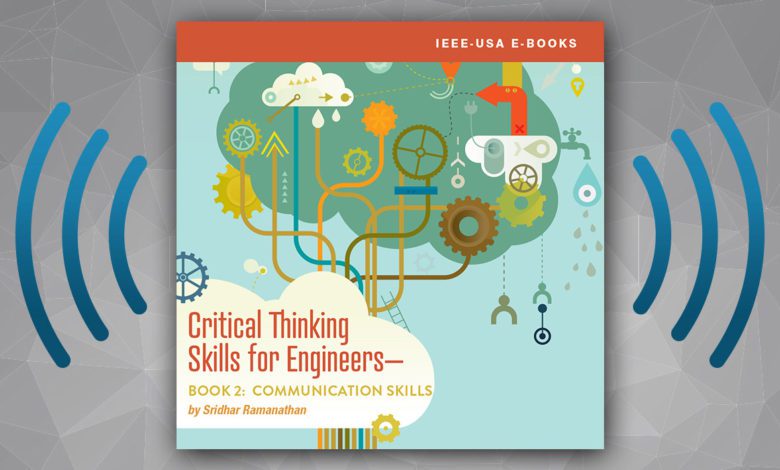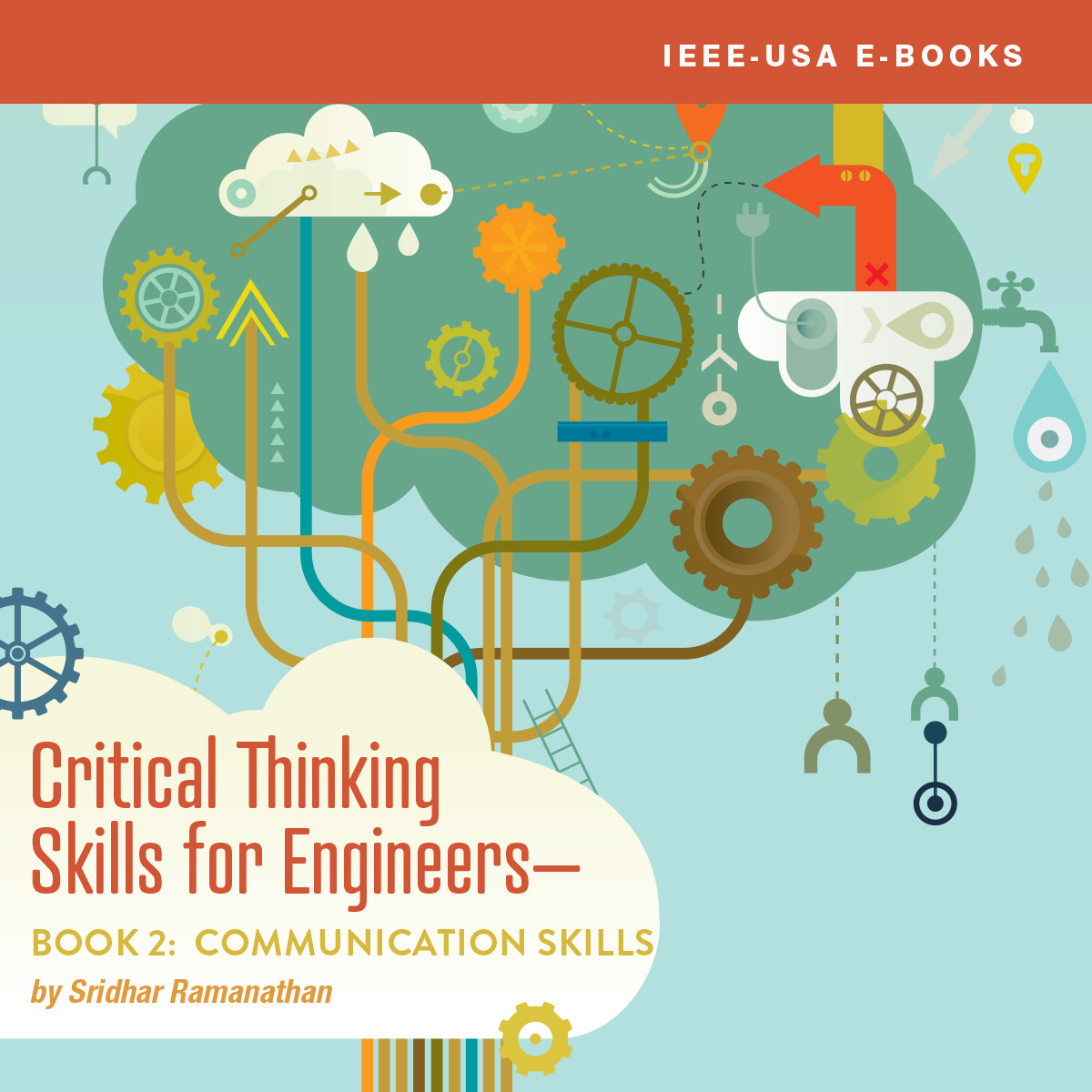
In his second book on critical thinking for engineers, Sridhar Ramanathan delves into the importance of communications — and the techniques an engineer can use to communicate with a team, a department, or with a larger organization. Critical thinking Skills for Engineers – Book 2 Communications Skills is now available from IEEE-USA as a new audiobook, as is his first book of the series on analytical skills.
Managing director and co-founder of Aventi Group (a high-tech product marketing firm), Ramanathan points out that for engineers, “Both oral and written communications are essential to group effectiveness, in achieving a specific goal.” The audiobook covers eight key areas of communications critical for an engineer to master:
- Asking important questions
- Active listening
- Expressing opinions and ideas
- Written communication
- Presentation
- Running a team meeting
- Collaborating on a project
- Managing conflict
The author devotes a chapter to each of these areas, giving specific helpful tips for better communication, as well as common pitfalls to avoid.
In the chapter on Active Listening, Ramanathan asserts, “Honing your listening skills will prove to be one of the greatest keys to your effectiveness as an engineer in advancing good ideas, recommendations and solutions.” He outlines five types of listeners (the critic, the expert, the challenger, the student and the observer) — and discusses the weaknesses or strengths of each.
Ramanathan argues it is critical that an engineer who wants to succeed must learn how to communicate opinions at meetings: “When advancing an opinion or idea in an engineering meeting context, you have to do more than just rely on good ideas to speak for themselves — you must do more to be heard.” He outlines ways to ensure that opinions and views are heard at meetings: lean in, speak up, power up, avoid caveats, pose a question, neutralize interruptions — and follow up.
Managing conflict is an important part of communicating, and the author devotes two chapter to the subject. When faced with conflict, Ramanathan suggests “the first step is to reflect on the conflict itself and tease out for yourself what is driving the conflict.” He then gives important advice such as avoiding using email when angry, not taking disagreements personally, and being open to the possibility that you might be wrong. Ramanathan points out that President Lincoln took time after the battle for Vicksburg to tell General Grant that he had been wrong, and that Grant had been right. It is one of many examples the author uses to drive his ideas home.
As with the other chapters, the chapter on written communication outlines best practices that should be followed by both new and seasoned engineers — whether writing for a journal, or an inter-office memo. These practices include having a clear purpose, knowing your reader, driving your main point home early, simplifying the complex, defining your terms, and selecting helpful visuals.
In another chapter Ramanathan suggests, “presentations must move people in some way, so plan ahead on the specific impact you want to make; decide how you can engage and move your audience; and end your talk with a clear call to action.” He again outlines best practices such as developing compelling images, and breaking away from slide after slide of bullet points. For those who want to go deeper into the communications area, Ramanathan recommends another IEEE-USA book by Harry Roman, Public Speaking for Engineers.
Probably every reader has sat through a meeting that was poorly run, or was disorganized in its approach. Ramanathan outlines ten simple tips to make sure meetings that you run are not remembered this way. He starts with logistics (start and end on time, publish an agenda); moves on to tone (listen, be upbeat); then covers pitfalls (make sure you have all the right stakeholders present); and finally, ends with the need to follow up (meeting notes documenting action items, including who is accountable and due dates).
Members can download the audiobook, Critical thinking Skills for Engineers – Book 2 Communications Skills can be downloaded for free at the IEEE-USA Shop.
This audiobook is the second in a five-book series by Ramanathan. All five of Ramanathan’s e-books are also available free to members at the IEEE-USA Shop.
The many suggestions Ramanathan discussed in the book are targeted to engineers — but the lessons are universal and can be helpful to an employee or manager in any field.
Sridhar Ramanathan has extensive experience in technology companies, ranging from startups to blue-chip firms. In his role with Aventi Group, he has been instrumental in leading many high-tech organizations through high-growth phases. Prior to to-starting Aventi, he was the marketing executive for Hewlett-Packard’s Managed Services business. Ramanathan has an MBA from the Wharton School of Business; and a B.S. in Engineering Physics, from the University of California, Berkeley.
Paul Lief Rosengren is the coauthor of In the Time of Covid: One Hospital’s Struggles and Triumphs. He worked for more than three decades in corporate communications at NBC, PSE&G, BD and in state government. He has a Masters in Public Policy from The Kennedy School of Government, Harvard and an undergraduate degree in political science from Dickinson College.







